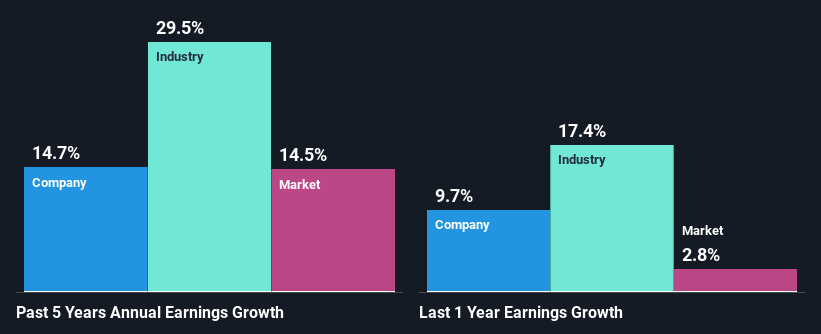Is Texas Pacific Land Corporation's (NYSE:TPL) Recent Stock Performance Tethered To Its Strong Fundamentals?
Most readers would already be aware that Texas Pacific Land's (NYSE:TPL) stock increased significantly by 14% over the past three months. Given the company's impressive performance, we decided to study its financial indicators more closely as a company's financial health over the long-term usually dictates market outcomes. Particularly, we will be paying attention to Texas Pacific Land's ROE today.
ROE or return on equity is a useful tool to assess how effectively a company can generate returns on the investment it received from its shareholders. In short, ROE shows the profit each dollar generates with respect to its shareholder investments.
Check out our latest analysis for Texas Pacific Land
How To Calculate Return On Equity?
Return on equity can be calculated by using the formula:
Return on Equity = Net Profit (from continuing operations) ÷ Shareholders' Equity
So, based on the above formula, the ROE for Texas Pacific Land is:
47% = US$417m ÷ US$888m (Based on the trailing twelve months to June 2023).
The 'return' refers to a company's earnings over the last year. So, this means that for every $1 of its shareholder's investments, the company generates a profit of $0.47.
What Has ROE Got To Do With Earnings Growth?
Thus far, we have learned that ROE measures how efficiently a company is generating its profits. Depending on how much of these profits the company reinvests or "retains", and how effectively it does so, we are then able to assess a company’s earnings growth potential. Assuming everything else remains unchanged, the higher the ROE and profit retention, the higher the growth rate of a company compared to companies that don't necessarily bear these characteristics.
Texas Pacific Land's Earnings Growth And 47% ROE
Firstly, we acknowledge that Texas Pacific Land has a significantly high ROE. Second, a comparison with the average ROE reported by the industry of 26% also doesn't go unnoticed by us. This likely paved the way for the modest 15% net income growth seen by Texas Pacific Land over the past five years.
We then compared Texas Pacific Land's net income growth with the industry and found that the company's growth figure is lower than the average industry growth rate of 30% in the same 5-year period, which is a bit concerning.
The basis for attaching value to a company is, to a great extent, tied to its earnings growth. It’s important for an investor to know whether the market has priced in the company's expected earnings growth (or decline). Doing so will help them establish if the stock's future looks promising or ominous. Has the market priced in the future outlook for TPL? You can find out in our latest intrinsic value infographic research report.
Is Texas Pacific Land Making Efficient Use Of Its Profits?
In Texas Pacific Land's case, its respectable earnings growth can probably be explained by its low three-year median payout ratio of 23% (or a retention ratio of 77%), which suggests that the company is investing most of its profits to grow its business.
Besides, Texas Pacific Land has been paying dividends for at least ten years or more. This shows that the company is committed to sharing profits with its shareholders. Existing analyst estimates suggest that the company's future payout ratio is expected to drop to 16% over the next three years.
Summary
In total, we are pretty happy with Texas Pacific Land's performance. Specifically, we like that the company is reinvesting a huge chunk of its profits at a high rate of return. This of course has caused the company to see a good amount of growth in its earnings. Having said that, looking at the current analyst estimates, we found that the company's earnings are expected to gain momentum. Are these analysts expectations based on the broad expectations for the industry, or on the company's fundamentals? Click here to be taken to our analyst's forecasts page for the company.
Have feedback on this article? Concerned about the content? Get in touch with us directly. Alternatively, email editorial-team (at) simplywallst.com.
This article by Simply Wall St is general in nature. We provide commentary based on historical data and analyst forecasts only using an unbiased methodology and our articles are not intended to be financial advice. It does not constitute a recommendation to buy or sell any stock, and does not take account of your objectives, or your financial situation. We aim to bring you long-term focused analysis driven by fundamental data. Note that our analysis may not factor in the latest price-sensitive company announcements or qualitative material. Simply Wall St has no position in any stocks mentioned.

